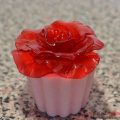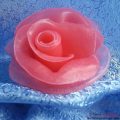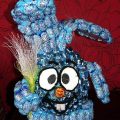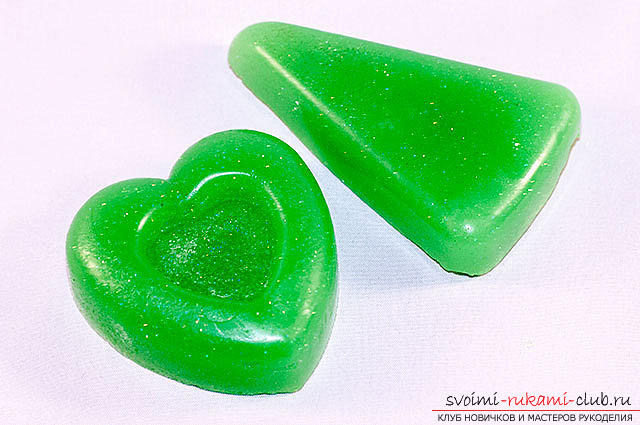
The soap made by own hands will be an excellent gift for Christmas. A simple master class for beginners.
Have not had time to celebrate the New Year - as it shouldprepare gifts for Christmas. And then it's useful to remember that the best gift is made by own hands. But this gift should not only be pleasant and beautiful, but also useful. And what could be more useful than soap? When mankind invented soap, the number of diseases associated with unsanitary conditions declined. But science and the chemical industry do not stand still, and over time, soap has ceased to be an absolutely safe product. Philosophy of soap Soap is a chemical product, a mixture of sodium and potassium salts of fatty acids. It is made with the help of transformations of the most different acids under the action of hydroxides. Roughly speaking, the usual fat is taken, a caustic soda is added, it is heated, and soap is obtained. However, not every soap is equally useful. So, soap removes everything from the skin indiscriminately, so it is impossible to wash with bactericidal soaps every day. In addition, soap can degrease the body. If you choose soap in the store, you need to carefully study the packaging to know whether it is natural or synthetic. Synthetic wash the skin too well, wash off with it absolutely the entire layer of fat. It is also important to avoid all possible reactions to soap - skin, allergic. It is recommended that allergic persons wash with baby soap. If the skin is oily, you can use any cosmetic or toilet soap. And if on a fat skin there are spots, then it is better to choose a soap for washing sulsen. But the most useful and the best soap is a soap made by own hands, after all you precisely know, of what it consists. In addition, making soap is an exciting and creative process that gives you the opportunity to get a product with the properties that your skin needs. Homemade soap is the maximum of natural ingredients in the form that you like. In this master class we will show you how to make it. How to make soap yourself? You will need:
- Baby soap or a special soap base, which can be bought at specialized craft goods stores. It can be transparent and matte.
- Form for soap.
- Fatty oil (can be olive).
- Aromatizer.
- Dye.
- Additives at will.
Manufacturing process: 1. Form. Choose a shape for the future of soap. This can be a special plastic form from the store for needlework or what is at hand: children's sand molds, yogurt cups or cartons of milk, a silicone baking dish (most convenient for beginners). 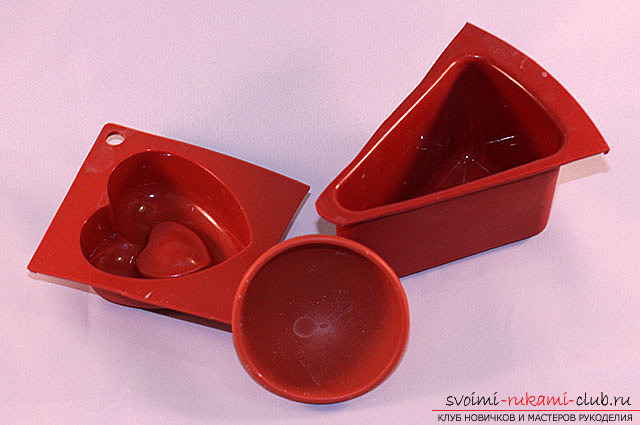 2. Soap base or baby soap should be cut into cubes and melt in a water bath or in a microwave. If you use a microwave oven, be careful, the substrate heats up very quickly, and it should not boil. It is better to be constantly at the oven and periodically stir the base.
2. Soap base or baby soap should be cut into cubes and melt in a water bath or in a microwave. If you use a microwave oven, be careful, the substrate heats up very quickly, and it should not boil. It is better to be constantly at the oven and periodically stir the base. 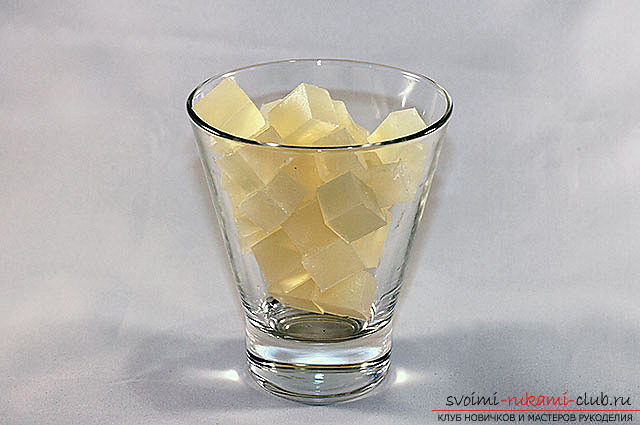 3. Fatty oil. Pour 100 grams of soap base into a glass and add 1/3 teaspoon of fatty oil. Do not overdo it, because if the oil is too much, the finished soap will not foam.
3. Fatty oil. Pour 100 grams of soap base into a glass and add 1/3 teaspoon of fatty oil. Do not overdo it, because if the oil is too much, the finished soap will not foam. 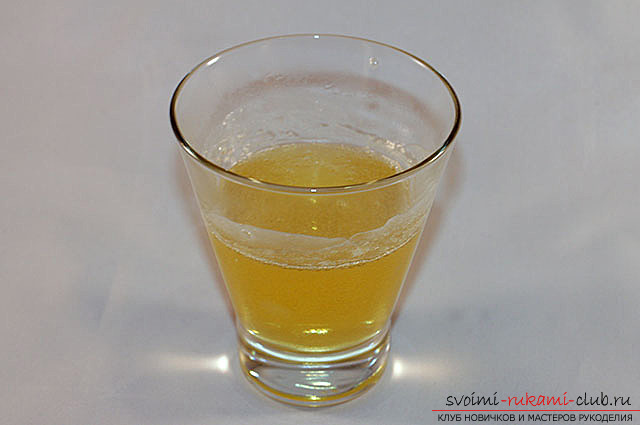 4. Color. Dyes are dry, liquid, pigments, mother of pearl. In addition, the color of soap can give and natural ingredients. For example, chocolate will give soap a brown color, and coffee - black. Dry colors are very concentrated. They need to be dissolved in water and then pipetted into the soap. If you add too much dye, soap foam will be colored. Liquid dyes are already diluted, they are very convenient to use. Add 1-10 drops per 100 g of soap. You can mix them together, so it's enough to buy the colors of the primary colors - red, yellow and blue. Pigments are insoluble colored powders. Take a third of a teaspoon of pigment per 100 g of soap base, mix in the same teaspoon with the fatty oil, so that there are no lumps. Only then add to the foundation. If you have chosen a pigment, use it at the stage of adding fatty soap to the soap so that the latter does not become too much in the end. Also note that the pigment obscures the soap base. So, if you use a transparent base, after adding the pigment, the soap will still become opaque. Mother-of-pearl is glitter, glitter. They will make the soap more festive and elegant. Can be used together with any of the other types of dyes.
4. Color. Dyes are dry, liquid, pigments, mother of pearl. In addition, the color of soap can give and natural ingredients. For example, chocolate will give soap a brown color, and coffee - black. Dry colors are very concentrated. They need to be dissolved in water and then pipetted into the soap. If you add too much dye, soap foam will be colored. Liquid dyes are already diluted, they are very convenient to use. Add 1-10 drops per 100 g of soap. You can mix them together, so it's enough to buy the colors of the primary colors - red, yellow and blue. Pigments are insoluble colored powders. Take a third of a teaspoon of pigment per 100 g of soap base, mix in the same teaspoon with the fatty oil, so that there are no lumps. Only then add to the foundation. If you have chosen a pigment, use it at the stage of adding fatty soap to the soap so that the latter does not become too much in the end. Also note that the pigment obscures the soap base. So, if you use a transparent base, after adding the pigment, the soap will still become opaque. Mother-of-pearl is glitter, glitter. They will make the soap more festive and elegant. Can be used together with any of the other types of dyes. 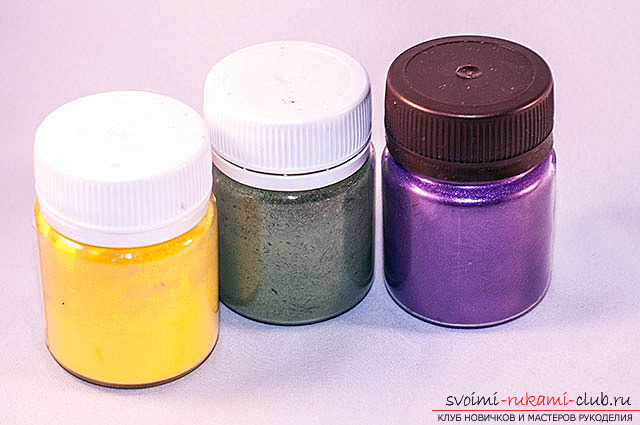 5. Aroma. For a pleasant smell in the soap, you can add either essential oil (3-7 drops per 100 grams of base), or flavorings on a water basis (3-4 drops per 100 grams). Do not mix essential oils and fragrances among themselves - the smell will end up as unpleasant. But different essential oils in one soap, as well as different flavors, can be mixed. Consider the fact that essential oils have additional properties, for example, essential oil of orange or ginger invigorates, and essential oil of lavender - on the contrary, soothes. 6. Cosmetic additives. In the soap, you can add additional ingredients to enrich it and give it additional properties or make soap-scrub. To add to the soap you can:
5. Aroma. For a pleasant smell in the soap, you can add either essential oil (3-7 drops per 100 grams of base), or flavorings on a water basis (3-4 drops per 100 grams). Do not mix essential oils and fragrances among themselves - the smell will end up as unpleasant. But different essential oils in one soap, as well as different flavors, can be mixed. Consider the fact that essential oils have additional properties, for example, essential oil of orange or ginger invigorates, and essential oil of lavender - on the contrary, soothes. 6. Cosmetic additives. In the soap, you can add additional ingredients to enrich it and give it additional properties or make soap-scrub. To add to the soap you can:
- chocolate or cocoa,
- honey,
- powdered milk,
- oat flakes,
- coconut shavings,
- cosmetic clay,
- coffee,
- orange peel or lemon peel.
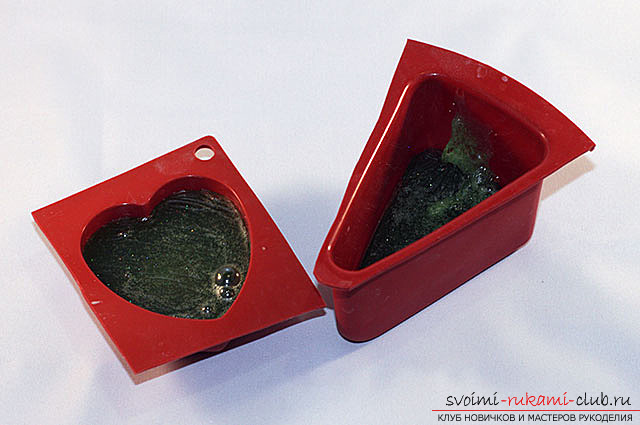 7. When you have added everything you need to the soap, you need to pour it into a mold and cool it in the refrigerator or on the windowsill. It is possible to remove soap from the mold only when it has completely cooled down. The silicone mold is easily removed, literally turning inside out, so it is optimal for beginners and for those who save time. Plastic, gives a greater scope of imagination, but soap from it to take out a little heavier. If the soap does not get out of the mold at all - leave it for a few days, it will dry up, and then you will easily get it. That's all, our master class is over. I wish you success!
7. When you have added everything you need to the soap, you need to pour it into a mold and cool it in the refrigerator or on the windowsill. It is possible to remove soap from the mold only when it has completely cooled down. The silicone mold is easily removed, literally turning inside out, so it is optimal for beginners and for those who save time. Plastic, gives a greater scope of imagination, but soap from it to take out a little heavier. If the soap does not get out of the mold at all - leave it for a few days, it will dry up, and then you will easily get it. That's all, our master class is over. I wish you success! 
